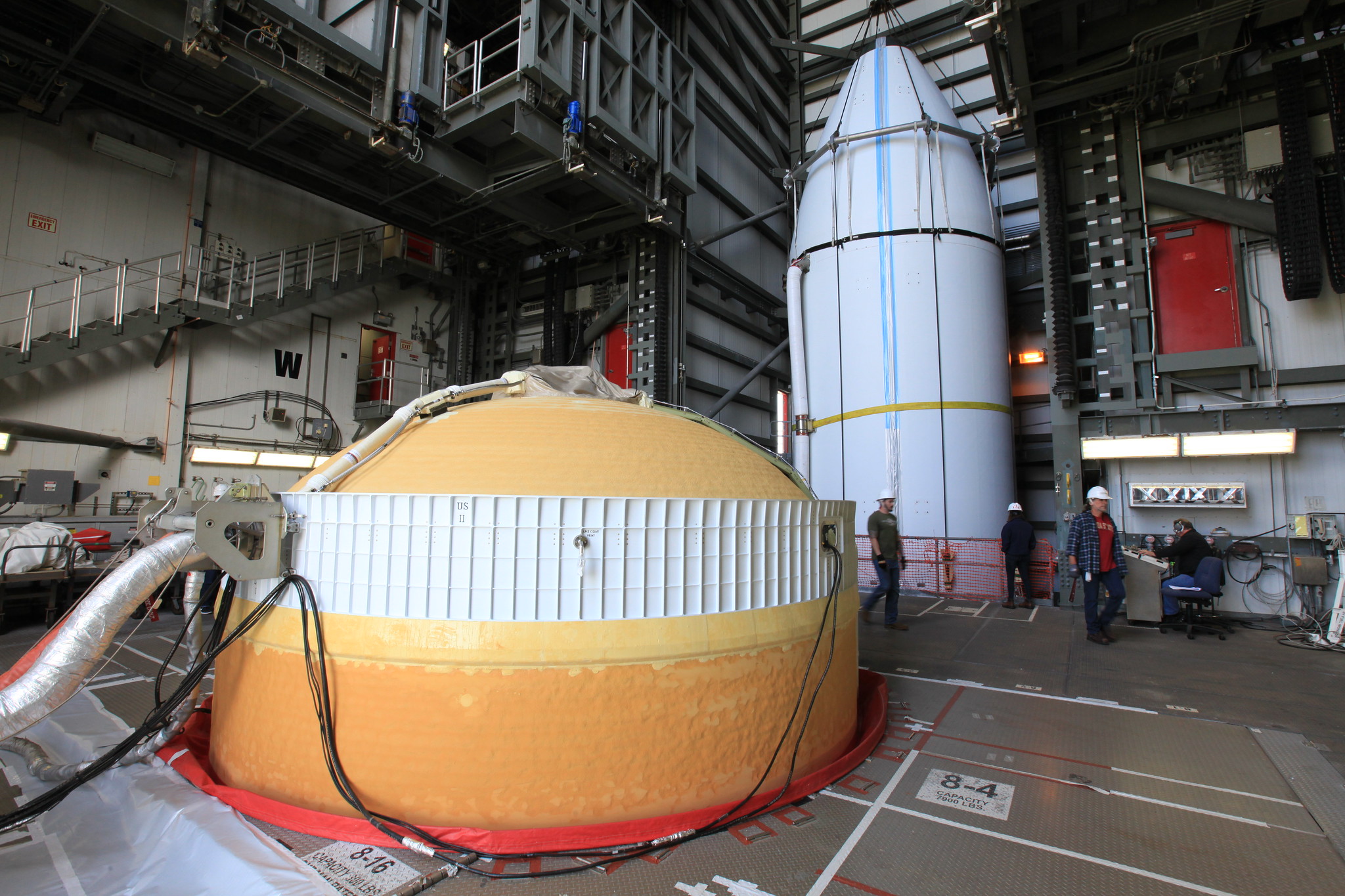The U.S. Air Force's tenth Wideband Global SATCOM (WGS) military communications satellite was hoisted aboard a United Launch Alliance Delta IV rocket on Feb. 26 in final preparation for its journey into space.
The WGS-10 spacecraft, already encapsulated in the 47-foot-long composite payload fairing, was moved from its processing facility to the seaside launch pad at Cape Canaveral Air Force Station's Space Launch Complex-37 at a top speed never exceeding 5 mph. The payload was hauled by a motorized KAMAG Elevating Platform Transporter (EPT) that provided hydraulic leveling and precision positioning capabilities along the route. The EPT also towed a Portable Environmental Control System (PECS) trailer to supply conditioned air to the fairing during the trip.
Once parked in the hoistway on the backside of the Mobile Service Tower (MST), technicians used the crane system in the gantry to carefully lift the encapsulated satellite atop the Delta IV rocket's second stage to complete a successful vertical integration of the launch vehicle and payload. The fully-assembled rocket now stands 218 feet tall.
A payload's installation on the rocket signals a major milestone in the final launch campaign after years of diligent work by the spacecraft and launch vehicle production teams, engineers and specialists to prepare a new national asset to be boosted into orbit.
A tip-to-tail electrical test of the combined payload and launch vehicle will occur later this week, an operation known as the Integrated Systems Test (IST).
Once that is completed, the comprehensive review process to verify flight readiness will begin in parallel to final vehicle closeouts for the targeted March 13 launch.
The WGS system is a constellation of the Defense Department's highest capacity communications satellites in geosynchronous orbit. The satellites provide essential connectivity to the U.S. military and allied partners, allowing combatant commanders to exert command and control of their tactical forces, from peace time to military operations.

Photo by United Launch Alliance

 Back To Blog List
Back To Blog List


